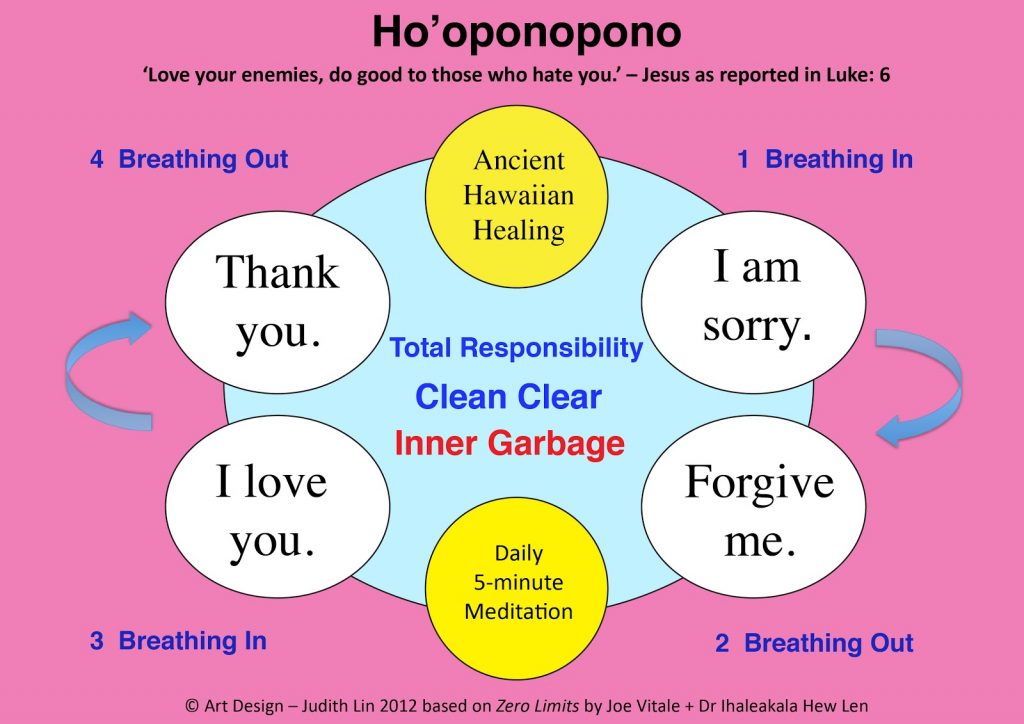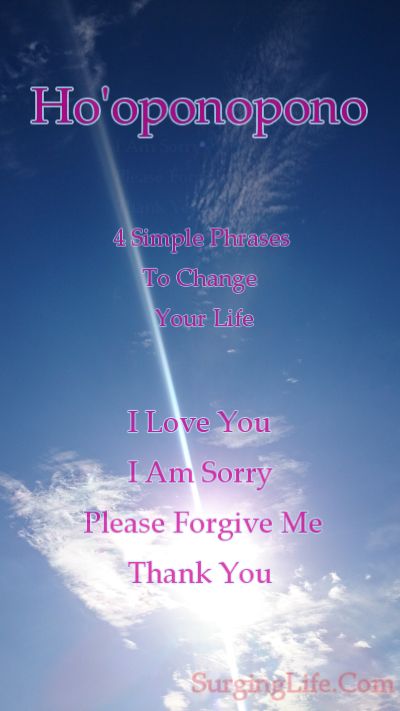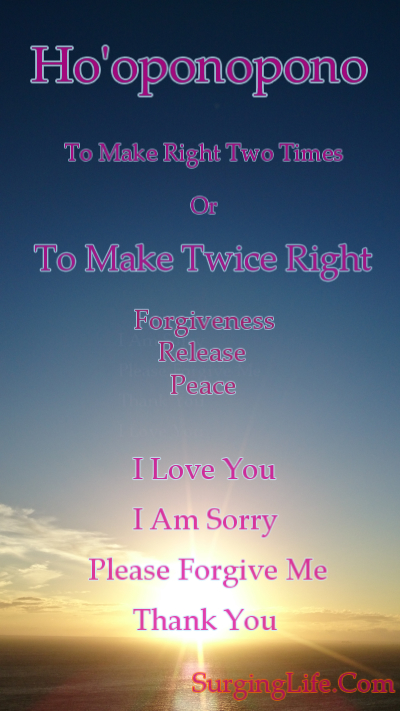In this article, we will explore how Ho’oponopono, a traditional Hawaiian practice of forgiveness and reconciliation, relates to the concept of mindfulness. We will delve into the principles of Ho’oponopono and how it can help in cultivating a state of mindfulness in one’s life. By understanding the connections between these two practices, you will gain insight into how they can complement each other and lead to personal growth and inner peace. Ho’oponopono and mindfulness are two powerful practices that have gained popularity in recent years for their ability to promote healing, self-awareness, and personal growth. While they may come from different origins and have their unique principles, these practices share common ground and can be complementary in many ways. In this article, we will explore the connection between Ho’oponopono and mindfulness, the techniques that can be used to enhance each practice, and the benefits of combining them.

Definition of Ho’oponopono
Ho’oponopono is a traditional Hawaiian practice that focuses on reconciliation, forgiveness, and spiritual cleansing. The word “Ho’oponopono” translates to “to make right” or “to correct” in Hawaiian, reflecting its aim to restore harmony and balance in relationships, both with others and ourselves. At its core, Ho’oponopono is based on the belief that our thoughts, beliefs, and memories contribute to the problems and challenges we face, and by taking responsibility for them, we can bring about healing and transformation.
Origin of Ho’oponopono
Ho’oponopono has its roots in the ancient Hawaiian culture and has been practiced for generations. It was traditionally used to address conflicts, restore harmony within communities, and maintain healthy relationships. The practice involves coming together in a group setting, where each person has the opportunity to express their feelings, ask for forgiveness, and offer forgiveness to others. Through this process, deep emotional healing and reconciliation can occur.
Principles of Ho’oponopono
Ho’oponopono is guided by several key principles:
-
Responsibility: Ho’oponopono emphasizes taking responsibility for our thoughts, actions, and emotions. It acknowledges that we are co-creators of our experiences and that by accepting this responsibility, we can begin the healing process.
-
Forgiveness: Forgiveness is a central aspect of Ho’oponopono. It involves letting go of resentment, anger, and blame towards ourselves and others. Through forgiveness, we can free ourselves from the emotional burdens that hold us back.
-
Gratitude: Gratitude is another important principle in Ho’oponopono. It encourages us to focus on the positive aspects of life and express gratitude for the blessings we have. By cultivating a grateful mindset, we can shift our perspective and attract more positivity into our lives.
Definition of Mindfulness
Mindfulness is the practice of intentionally bringing one’s attention to the present moment without judgment. It involves being fully aware of our thoughts, feelings, bodily sensations, and the surrounding environment. Mindfulness is often cultivated through meditation, but it can also be practiced in daily activities such as eating, walking, or even washing dishes.

History of Mindfulness
Mindfulness has its roots in ancient Buddhist teachings and has been practiced for thousands of years. It was popularized in the West by Jon Kabat-Zinn in the late 1970s through the Mindfulness-Based Stress Reduction (MBSR) program. Since then, mindfulness has gained widespread recognition for its ability to reduce stress, improve mental well-being, and enhance overall quality of life.
Benefits of Mindfulness
The benefits of mindfulness are numerous and well-documented. Research has shown that practicing mindfulness can:
- Reduce stress and anxiety
- Improve focus and concentration
- Enhance emotional regulation
- Increase self-awareness
- Promote compassion and empathy
- Foster a greater sense of overall well-being

Similarities between Ho’oponopono and Mindfulness
While Ho’oponopono and mindfulness have different origins and approaches, they share common ground in several ways:
-
Self-reflection: Both practices emphasize the importance of self-reflection and introspection. Whether it’s through the process of forgiveness in Ho’oponopono or the non-judgmental observation of thoughts and emotions in mindfulness, both practices encourage us to look deeply within ourselves and uncover the root causes of our suffering.
-
Non-attachment: Both practices advocate for letting go of attachment to thoughts, beliefs, and emotions that no longer serve us. In Ho’oponopono, this is achieved through forgiveness and releasing resentments, while in mindfulness, it involves recognizing and accepting the transient nature of thoughts and emotions without getting caught up in them.
-
Present-moment awareness: Both Ho’oponopono and mindfulness emphasize the importance of being fully present in the moment. Whether it’s through the practice of meditation or the process of reconciliation in Ho’oponopono, both practices invite us to cultivate a deep sense of presence and awareness.
Complementary Practices
Ho’oponopono and mindfulness can also be complementary practices. The skills developed in mindfulness, such as non-judgmental awareness and self-compassion, can enhance the effectiveness of Ho’oponopono. Similarly, the principles of forgiveness and gratitude in Ho’oponopono can deepen our capacity for mindfulness and present-moment awareness.

Importance of Self-Reflection in both Practices
Self-reflection plays a crucial role in both Ho’oponopono and mindfulness. By reflecting on our thoughts, actions, and emotions, we can gain insight into the underlying causes of our suffering and begin the process of healing and transformation. Self-reflection allows us to identify patterns, beliefs, and memories that no longer serve us and take responsibility for healing them.
Ho’oponopono Techniques for Mindfulness
There are several Ho’oponopono techniques that can be incorporated into mindfulness practice to enhance its effectiveness:
Ho’oponopono Meditation
Ho’oponopono meditation involves the repetition of traditional Ho’oponopono phrases or mantras, such as “I’m sorry, please forgive me, thank you, I love you.” This meditation can be practiced while sitting in a comfortable position, focusing on the breath, and silently reciting the mantras. This technique helps cultivate a sense of forgiveness, gratitude, and love towards oneself and others.
Using Ho’oponopono Mantras in Mindfulness
In mindfulness practice, the Ho’oponopono mantras can be integrated by silently repeating them during moments of challenging emotions or difficult thoughts. By offering forgiveness and love to oneself and others in these moments, we can cultivate a sense of inner peace and acceptance.
Ho’oponopono Practices for Cultivating Present-Moment Awareness
Ho’oponopono can also be used to enhance present-moment awareness in mindfulness practice. By bringing attention to the thoughts, beliefs, and memories that arise in the present moment and offering forgiveness and love to them, we can deepen our understanding of ourselves and cultivate a greater sense of presence.

Mindfulness Techniques for Ho’oponopono
Similarly, there are mindfulness techniques that can enhance the effectiveness of Ho’oponopono:
Mindful Breathing in Ho’oponopono
Mindful breathing is a fundamental mindfulness practice that involves bringing attention to the breath and observing it without judgment. By incorporating mindful breathing into Ho’oponopono, we can deepen our connection to the present moment and cultivate a sense of calmness and clarity.
Mindful Eating as a Ho’oponopono Practice
Mindful eating involves bringing awareness to the process of eating, including the tastes, textures, and sensations of each bite. By practicing mindful eating during Ho’oponopono, we can bring attention to the nourishment and healing that food provides and cultivate a sense of gratitude and connection to the present moment.
Using Mindfulness to Enhance Forgiveness in Ho’oponopono
Mindfulness can also be used to enhance the process of forgiveness in Ho’oponopono. By bringing non-judgmental awareness to the emotions and thoughts that arise during the forgiveness process, we can deepen our understanding of ourselves and others and cultivate a greater sense of compassion and empathy.
Benefits of Combining Ho’oponopono and Mindfulness
The combination of Ho’oponopono and mindfulness can bring about numerous benefits:
Enhanced Self-Awareness
By integrating the practices of Ho’oponopono and mindfulness, we can deepen our self-awareness and gain insight into the patterns and beliefs that contribute to our suffering. This increased self-awareness allows us to make conscious choices and take responsibility for our thoughts, actions, and emotions.
Improved Emotional Well-being
Both Ho’oponopono and mindfulness have been shown to improve emotional well-being. By cultivating forgiveness, gratitude, and presence, we can reduce stress, anxiety, and depression, and experience greater levels of joy, peace, and overall emotional balance.
Deepened Spiritual Connection
Both Ho’oponopono and mindfulness have a spiritual component that can deepen our connection to ourselves, others, and the world around us. By practicing forgiveness, gratitude, and present-moment awareness, we can cultivate a sense of interconnectedness and oneness that transcends the limitations of our individual selves.
Applications of Ho’oponopono and Mindfulness
Ho’oponopono and mindfulness can be applied to various areas of life for personal growth and transformation:
Healing Trauma through the Practices
Both Ho’oponopono and mindfulness have shown promise in supporting individuals who have experienced trauma. By healing the emotional wounds through forgiveness, self-compassion, and non-judgmental awareness, individuals can begin the journey of healing and reclaiming their lives.
Improving Relationships and Communication
Ho’oponopono and mindfulness can enhance relationships and communication by promoting forgiveness, empathy, and active listening. By taking responsibility for our own thoughts, emotions, and behaviors, we can create healthier and more authentic connections with others.
Enhancing Personal Growth and Transformation
The combination of Ho’oponopono and mindfulness provides a powerful framework for personal growth and transformation. By regularly practicing forgiveness, gratitude, and present-moment awareness, we can release limiting beliefs, expand our consciousness, and experience profound shifts in our lives.
Challenges and Considerations
While the connection between Ho’oponopono and mindfulness is rich with potential, there are a few challenges and considerations to keep in mind:
Cultural Appropriation Concerns
Ho’oponopono is deeply rooted in Hawaiian culture and should be approached with respect and understanding. It is important to seek guidance from authentic teachers and resources to ensure that the practice is honored and practiced responsibly.
Finding Authentic Teachers and Resources
Both Ho’oponopono and mindfulness can be learned through various sources, but it’s important to find authentic teachers and resources that align with your values and intentions. Seek out teachers who have a deep understanding and connection to the practices and can guide you on your journey.
Integrating the Practices in Daily Life
Ho’oponopono and mindfulness are not quick fixes or one-time practices. To fully benefit from their potential, they need to be integrated into daily life. This requires commitment, consistency, and a willingness to engage in self-reflection and self-care on an ongoing basis.
Conclusion
The connection between Ho’oponopono and mindfulness offers a powerful framework for healing, personal growth, and transformation. By combining the principles and techniques of both practices, we can enhance self-awareness, improve emotional well-being, and deepen our spiritual connection. The integration of these practices provides us with a pathway to healing ourselves, our relationships, and ultimately, the world around us. As you delve into the exploration and practice of Ho’oponopono and mindfulness, be open to the infinite possibilities for healing, growth, and collective transformation.
